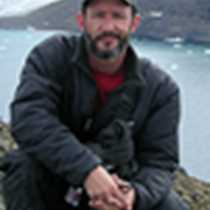Friars Rocks, Cabo San Lucas
Our morning was spent searching for and finding humpback whales. During the winter and spring months these “canaries of the sea,” known for their intricate songs and athletic behavior at the water surface, make their way up the western coast of Mexico. They stop along the way at the southern end of the Baja California peninsula. Many different behaviors are observed, including breaching by both adult and young, tail and fluke slapping among competitive male groups, and terminal dive displays of tail flukes by most animals. The competitive groups of mostly males will charge to the surface and near each other with mouths inflated with water in an attempt to look larger.
For our afternoon visit we switched species but still saw competitive male groups during the annual rite of passage known as “Spring Break.” The numerous college and college aged visitors enjoyed the many beaches and activities that Cabo San Lucas has to offer. Also visiting were the passengers of three large cruise ships also in port. Cabo has changed so much since the days of the friars and the original mission for which finnesterra or lands end is named. The pictured granitic rocks are the dividing line between the open Pacific Ocean and the Gulf of California. As the captain carefully took the ship by the cliff faces we watched the many pelicans, frigate birds and even a peregrine rest on the friar’s rocks. A group of California sea lions lay on the lower flat areas in the failing light of sunset. It was a fitting end to a day of discovery along the southern end of the Baja peninsula.
Our morning was spent searching for and finding humpback whales. During the winter and spring months these “canaries of the sea,” known for their intricate songs and athletic behavior at the water surface, make their way up the western coast of Mexico. They stop along the way at the southern end of the Baja California peninsula. Many different behaviors are observed, including breaching by both adult and young, tail and fluke slapping among competitive male groups, and terminal dive displays of tail flukes by most animals. The competitive groups of mostly males will charge to the surface and near each other with mouths inflated with water in an attempt to look larger.
For our afternoon visit we switched species but still saw competitive male groups during the annual rite of passage known as “Spring Break.” The numerous college and college aged visitors enjoyed the many beaches and activities that Cabo San Lucas has to offer. Also visiting were the passengers of three large cruise ships also in port. Cabo has changed so much since the days of the friars and the original mission for which finnesterra or lands end is named. The pictured granitic rocks are the dividing line between the open Pacific Ocean and the Gulf of California. As the captain carefully took the ship by the cliff faces we watched the many pelicans, frigate birds and even a peregrine rest on the friar’s rocks. A group of California sea lions lay on the lower flat areas in the failing light of sunset. It was a fitting end to a day of discovery along the southern end of the Baja peninsula.




